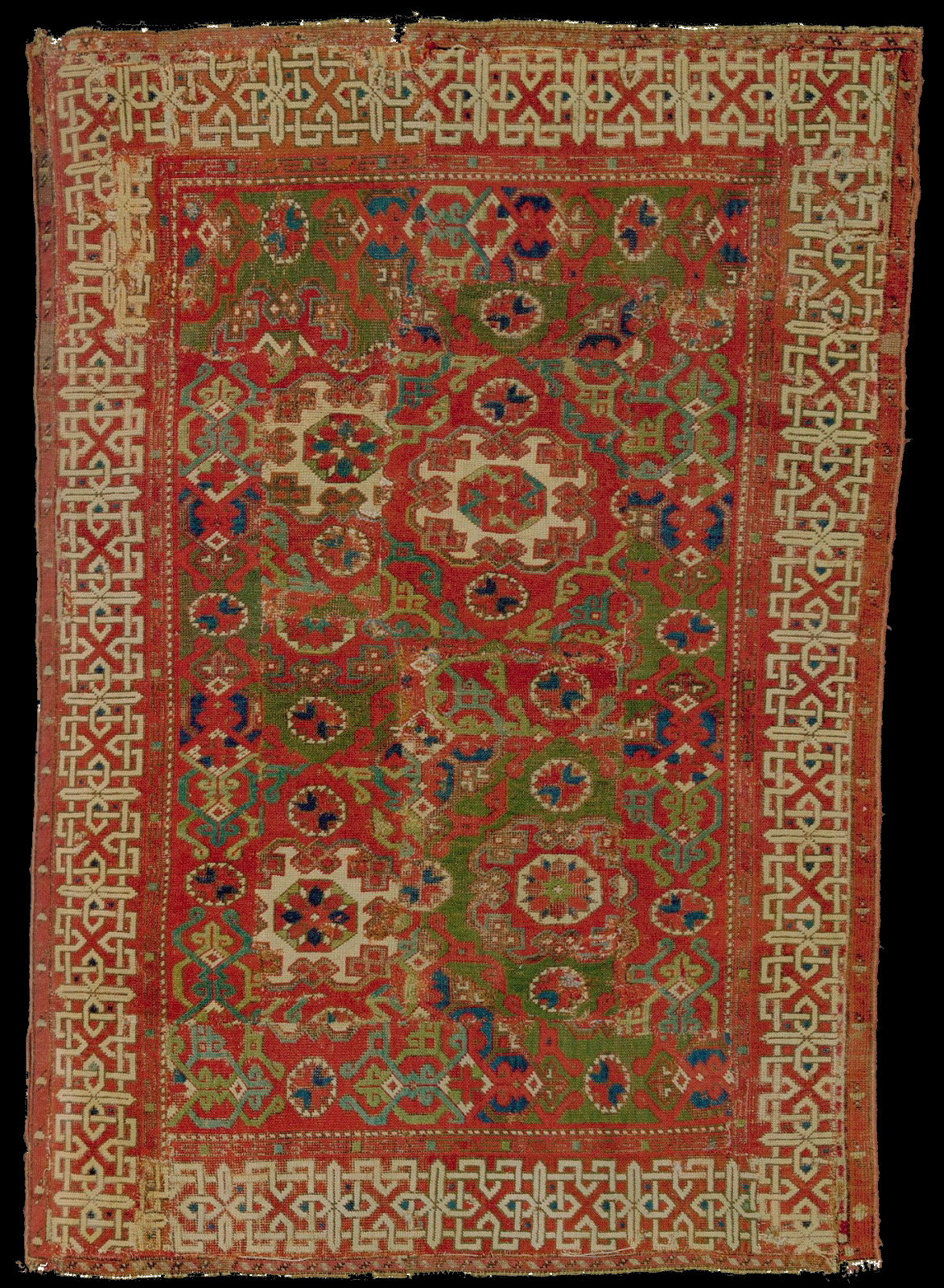Sotheby's Carpets
New York | 03 Jun 2005, 10:15 AM | N08103
LOT 17
A "SMALL PATTERN HOLBEIN" FRAGMENTARY RUG, WEST ANATOLIA,
16th century
Condition Note: oxidized charcoals, pieced together, rewoven areas, outer
guard stripes from a later rug, overcast sides,
ESTIMATE
20,000-30,000 USD
CATALOGUE NOTE
PROVENANCE: Property from
a Collection, Sotheby's New York, 15 December 2000, lot 60.
CATALOGUE NOTE
The 'Small Pattern Holbein' design is named after
the artist Hans Holbein the Younger, a similar rug appears in his
Portrait of George Gisze of 1532. This rug, albeit composite with
partially displaced field motifs, has good color
retention and clarity
of drawing. According to Charles Grant Ellis, Ellis in Holbeinland, see:
Pinner, Robert and Denny,
Walter P. (eds) Oriental Carpet and Textile
Studies I, London, 1985, pp. 55-75, there are only 26 examples of 'Small
Pattern Holbeins' with bi-colored fields displaying panel counterchange.
The Kufesque border of the current lot is of
the 'C1' type as
classified by Pinner, Robert and Stanger, Jackie, 'Kufic' Borders on
'Small Pattern Holbein' Carpets,
Hali, vol. 1, no. 4, 1978, pp. 335-8
(see D14). This border can be seen in a painting by Antonio Badile dating
from
1544 in the Museo del Castelvacchio, Verona, see: Mills, John
'Small Pattern Holbein' Carpets in Western Paintings,
Hali, vol. 1, no.
4, 1978, p. 332, m. 34, for a detail of Madonna and Child with SS. Andrew,
Peter and John the
Evangelist. For related carpets see: Boralevi,
Alberto, Oriental Geometries: Stefano Bardini and the Antique Carpet,
Florence, 1999, pl. 12, p. 50-51; Ellis in Holbeinland (op. cit.), R.28,
pp. 65 and 67, for a rug in the Bavarian National
Museum, Munich,
T.1598, and another in the Hungarian National Museum of Applied Arts,
Budapest (inv. no. 14.785),
see: Batari, Ferenc, The First Turkish
Carpet Exhibition in the West, Hali, Issue 136, p. 71. Two fragments from
this
group have appeared on the market, see: Christie's London, The
Christopher Alexander Collection, 15 October 1998,
lot 218 and
Christie's London, 12 October 2000, lot 201. Among the most sought after
of all Classical Turkish
weavings, according to Ellis (op. cit.), of
the 70 known rugs and fragments of the 'Small Pattern Holbein' group, all
but
13 are held either by museums, churches or other institutions.
|

